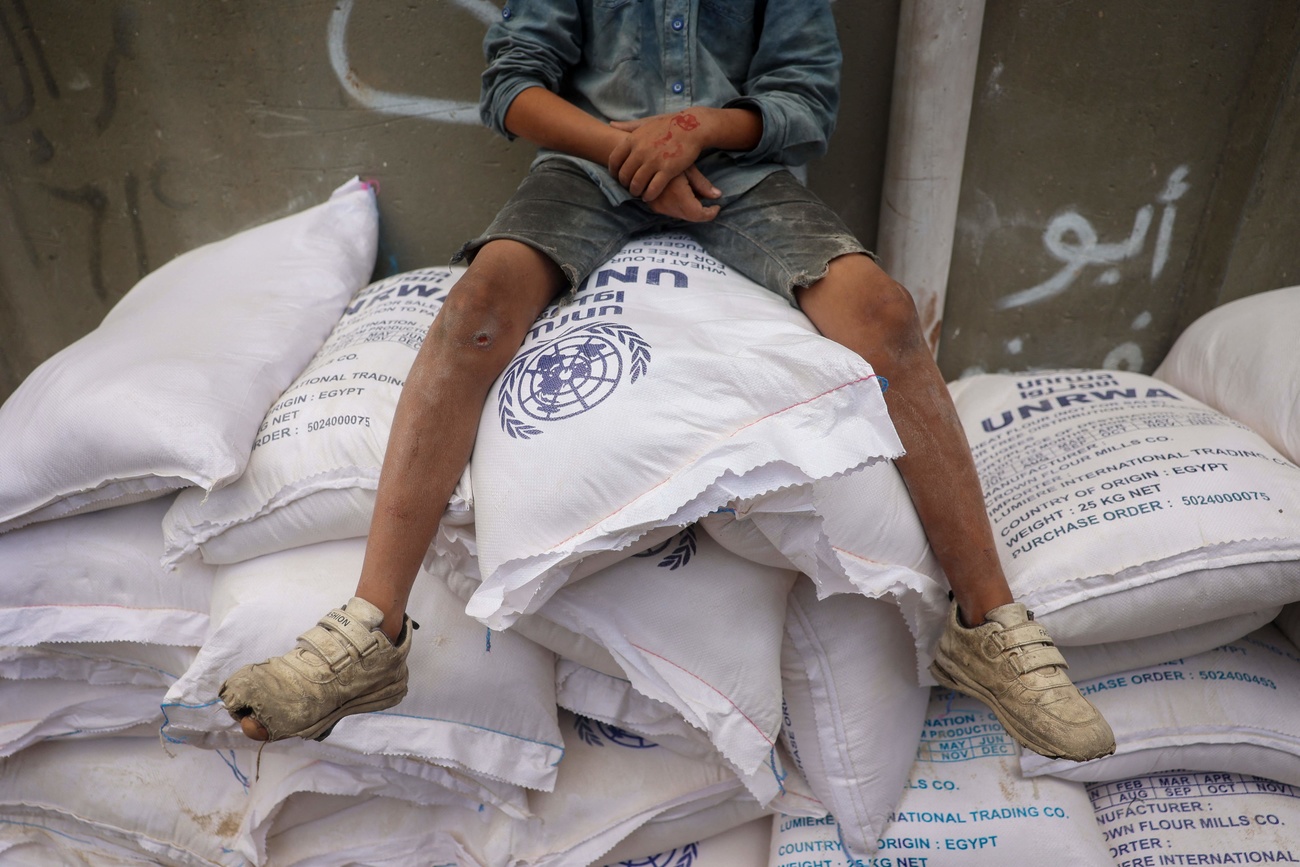Government rapped over recycled paper

Swiss environmental groups have hit out at the federal authorities for failing to use more recycled paper.
The news has raised eyebrows in a country which normally prides itself on being a champion of recycling.
The Swiss association for the promotion of ecological paper and ecology in the workplace (FUPS) and the “foretsanciennes.ch” initiative, launched by Greenpeace and the Fonds Bruno Manser, criticised the federal authorities on Monday for using less and less recycled paper.
They claim the percentage of recycled paper used in photocopiers and printers in government offices has continued to fall over the past ten years from 51 per cent in 1998 to only 33 per cent in 2004.
They have demanded that at least 60 per cent of paper used in federal offices be recycled and 20 per cent be certified with the Forest Stewardship Council (FSC) green label.
“For years the government talks about sustainable development, but the share of recycled paper used by the federal authorities continues to drop,” said Rahel Wunderli from foretsanciennes.ch.
“If you look at overall paper consumption and not just photocopy and printing paper the authorities appear in a better light,” Daniela Feldmann, head of communication at the Federal Building and Logistics Office, told swissinfo.
Federal Environment Office spokesman André Simonazzi said it would comment once a new federal environmental report is published on Wednesday.
The production of recycled paper consumes one third less energy and water than that made with virgin fibres, and recycled paper is ten to 15 per cent less expensive, FUPS said in a statement.
Leading recycler
Switzerland is among Europe’s leading recyclers of rubbish. In 2005 it recycled around 51 per cent of rubbish collected from households and small businesses, compared with around 60 per cent for Germany and the Netherlands, and 25 per cent for Britain.
“Paper is the biggest part of this. In 2005 we collected 2.5 million tons of waste separately, of which 1.2 million tons were paper and cardboard. The recycling rate for paper was 74 per cent in 2005 and rose to 77 per cent in 2006,” Peter Gerber, from the Federal Environment Office, told swissinfo.
While Switzerland excels in the recycling of glass (95 per cent) and plastic bottles (70 per cent), more can still be done for paper and cardboard, he claimed.
“Seventy-seven per cent is a good result, but this could be increased by improving the collection and separation of paper and cardboard,” said Gerber.
Recycling old paper is generally cheaper than incineration, according to the Federal Environment Office. Depending on the type of plant, incineration of a ton of waste costs between SFr150-300 ($124-248), while the processing costs SFr100-150 per ton, excluding collection costs.
Who pays?
“The problem in the past was the financing of the collection,” said Gerber.
For decades, refuse collection and disposal were financed by the communes via taxes and fees.
“[In the past] everyone in Switzerland knew that there was a paper collection, but when the commune had to pay for it, it was not always interested in collecting large amounts and so only did it irregularly. But it’s been getting better over the past few years,” he added.
“A new solution has been in place since the beginning of 2007 involving a minimum payment [by the paper industry] to the communes for the separate collections of paper and cardboard.”
Waste paper is the most important raw material for the domestic paper and cardboard industries. Just under two-thirds of industry needs come from waste-paper collections.
“Swiss paper industries need used paper as they don’t have enough raw materials to produce things like newspapers and cardboard,” explained Gerber. “So it’s not a surprise that the communes are collecting to sell on to the paper industry.”
swissinfo, Simon Bradley
A total of 1.66 million tons of paper and cardboard (224kg/capita) was consumed in Switzerland in 2004. Average per capita paper use in the United States is 333kg. Average per capital paper use worldwide is 48kg.
Of this, 1.16 million tons was recycled (157 kg/capita; 69.9% of total consumption).
Separate collections by the communes are only carried out for used paper/cardboard from private households and small businesses, which represents around half of the total volume (80kg per inhabitant).
Approximately 90% of this is printed material; the remaining 10% is paper and cardboard packaging.
The other half of the used paper/cardboard stems from the service sector and industry and is delivered to the recycling companies via other channels.
According to the environmental organisation Waste Watch, for every ton (about 2 pallets) of 100% post-consumer recycled paper purchased instead of virgin fibre paper, you can save at least 30,000 litres of water and 3,000-4,000KWh of electricity – enough power for an average three-bedroom house for one year.
It is estimated that global paper consumption will rise by 50% by 2010.

In compliance with the JTI standards
More: SWI swissinfo.ch certified by the Journalism Trust Initiative












You can find an overview of ongoing debates with our journalists here . Please join us!
If you want to start a conversation about a topic raised in this article or want to report factual errors, email us at english@swissinfo.ch.